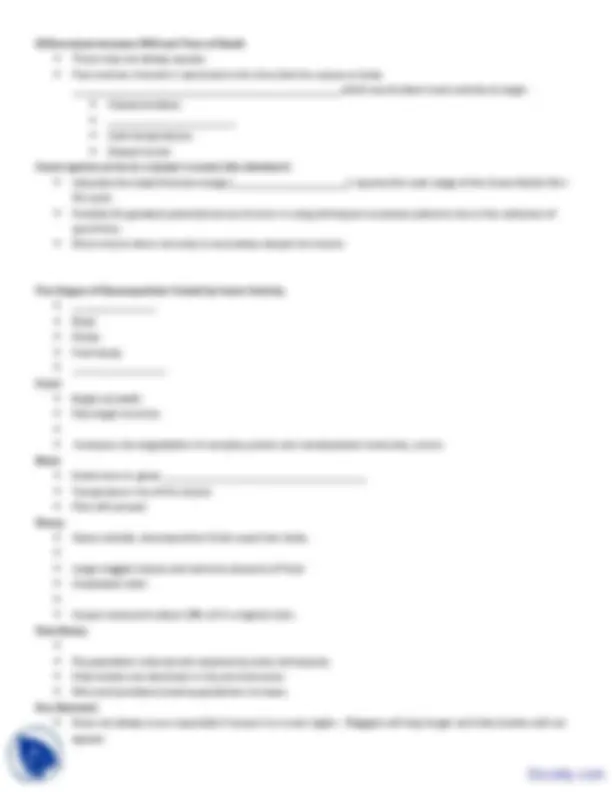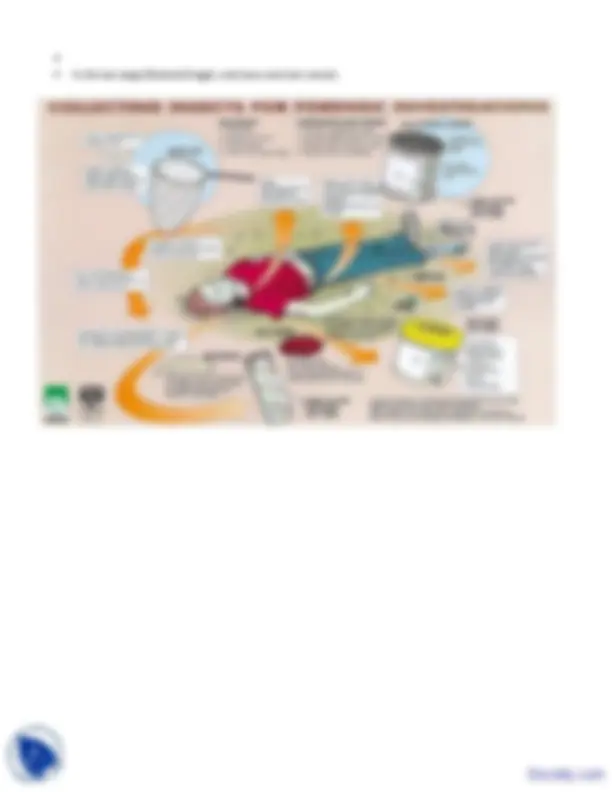




Study with the several resources on Docsity

Earn points by helping other students or get them with a premium plan


Prepare for your exams
Study with the several resources on Docsity

Earn points to download
Earn points by helping other students or get them with a premium plan
Community
Ask the community for help and clear up your study doubts
Discover the best universities in your country according to Docsity users
Free resources
Download our free guides on studying techniques, anxiety management strategies, and thesis advice from Docsity tutors
Forensic science (often shortened to forensics) is the application of a broad spectrum of sciences and technologies to investigate and establish facts of interest in relation to criminal or civil law. This lecture includes: Forensic Entomology, Most Diverse, Abundant, Described Species, Incomplete, Tubular Body, Complete Metamorphosis, Insects As Evidence, Insect Biology, Species Larvae
Typology: Study notes
1 / 4

This page cannot be seen from the preview
Don't miss anything!



Forensic Entomology A forensic entomologist’s job may include:
Insect Biology Insects are the most diverse and abundant forms of life on earth. There are over a million described species____________________________________________ There is more total biomass of insects than of humans Insects undergo either incomplete or complete metamorphosis (Egg to larva to pupa to insect) Larva have a soft tubular body and look like worms. Fly species larvae are___________________________
Insects as Evidence
Succession of Insects on the Corpse Estimates of postmortem intervals based on insects present on the remains are based on:
__________________ occurs as an unexploited habitat (like a corpse) is invaded by a series of different organisms. The first invasion is by insect species which will alter the habitat in some form by their activities. These changes make the habitat attractive to a second wave of organisms which, in turn, alter the habitat for use by yet another organisms. Ecology of Decomposition _____________ - the first species feeding on corpse tissue. Includes rue flies (Diptera) and beetles (Coleoptera). _______________________ - species such as ants, wasps, and some beetles that feed on both the corpse and associated maggots. Large populations of omnivores may slow the rate of corpse’s decomposition by reducing populations of necrophagous species. __________________________________ - beetles, true flies and wasps that parasitize immature flies. ____________ – pill bugs, spiders, mites, centipedes that use the corpse as an extension of their normal habitat
Decay Rates Are Variable Studies of decay rates of 150 human corpses at in the Anthropological Facility in Tennessee (The Body Farm) Most important environment factors in corpse decay:
Other Factors
Broad Estimates
In the last stage (Skeletal Stage), only bone and hair remain.